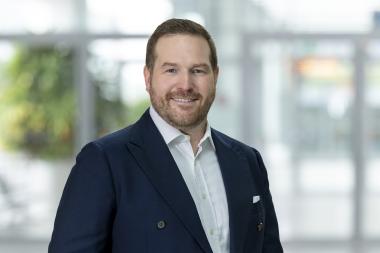Neuer Director für glasstec und A + A
Zum 1. September 2025 übernimmt Daniel Feische als Director die Verantwortung für die Portfolios Occupational Safety & Health sowie Glass Technologies bei der Messe Düsseldorf. Ab dem 1. Dezember 2025 verantwortet er diese vollständig und tritt damit die Nachfolge von Lars Wismer an, der in eine internationale Führungsrolle wechselt und die Position des Regional Head Messe Düsseldorf for Asia (MDfA) mit Sitz in Singapur übernimmt.
Daniel Feische ist seit Oktober 2017 im Unternehmen tätig und übernahm im Dezember 2020 die Leitung der Gruppe Neuproduktentwicklung und Marktforschung in der Abteilung Geschäftsentwicklung. In dieser Rolle trieb er maßgeblich die strategische Weiterentwicklung verschiedenster Themen voran. Zu seinen Erfolgen zählen unter anderem der Launch der Circular Valley Convention (CVC) sowie die Begleitung internationaler M&A-Projekte – darunter die Beteiligung an der US-amerikanischen Fachmesse XPONENTIAL.
„Wir danken Lars Wismer herzlich für sein großes Engagement und die Impulse, die er für die A+A gesetzt hat. Mit Daniel Feische haben wir einen starken Nachfolger aus den eigenen Reihen, der seine strategische und internationale Erfahrung hier zukünftig einbringen wird. Die A+A 2025 ist bereits jetzt hervorragend aufgestellt – mit über 2.200 Ausstellenden und einer Mischung aus internationalen Marktführern und spannenden Newcomern. Als wichtigste Leitmesse für sicheres und gesundes Arbeiten spiegelt sie die Innovationskraft der Branche wider “, erklärt Petra Cullmann, Executive Director der Messe Düsseldorf.
„Ich freue mich sehr auf die neue Aufgabe und das Vertrauen, das mir entgegengebracht wird. Die Themen Arbeitssicherheit sowie Glas Herstellung und Glas Verarbeitung sind nicht nur wirtschaftlich relevant, sondern auch gesellschaftlich bedeutsam. Gemeinsam mit einem engagierten Team möchte ich die A+A sowie die weiteren Formate in diesen Portfolios strategisch weiterentwickeln“, erklärt Daniel Feische.
Messe Düsseldorf
































